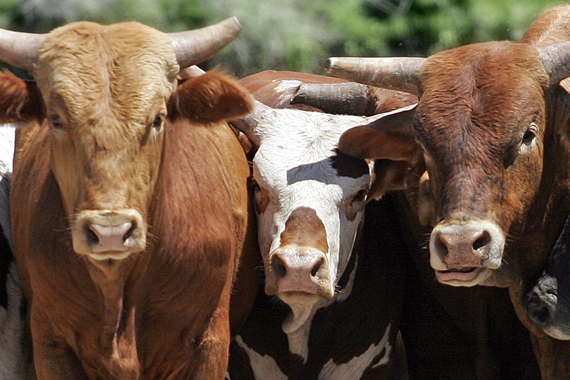

As any farmer knows, running a farm is no easy task. Like any business, agricultural enterprises need to generate a steady flow of income in order to maintain profitability and financial stability, but farming is an inherently unstable sector in which to run a business. In addition to the influence that market forces have on the value and sale price of a farmer’s crops, the environment also plays a crucial role in determining whether a farmer will have a bumper year or a low yield. When a business is subject to as many outside factors as this, it’s absolutely crucial to have some sort of finance in place that can enable growth in times of plenty and mitigate the worst effects of a bad year.
Bridging finance is a form of lending that can be put in place quickly and easily to meet almost any need, and because funding can be obtained in large amounts if necessary it can be a vital method for farmers to restore lost productivity. In the case of specialised livestock finance, bridging loans may also be used to enlarge a farmer’s herd to take advantage of good years, or to help reduce a herd’s size if it should become necessary. As a fast and flexible source of finance, bridging loans are an ideal solution to the requirements of farmers, as they offer a swift method of arranging finance in large amounts for a wide variety of uses.
In this article we’ll discuss how a bridging loan can be used to finance the expansion of a herd through livestock loans, and how this can benefit farmers who make use of this service. It’s important for anyone considering a bridging loan to understand the costs and responsibilities which are associated with this type of finance; before committing to a bridging loan for livestock finance, farmers should consult a qualified financial advisor to ensure this is the best solution for their needs.
For many pastoral farmers or for mixed-use arable farms, maintaining a healthy and profitable herd is at the top of the agenda for keeping profits on track. Keeping animals in good condition is an expensive job, though, and a herd of cows can easily cost many thousands of pounds in feed, cleaning and care costs. For most farmers, the expense of keeping their animals in good condition is their main expenditure as well as their main source of income, and financing any sort of expansion to their farm is dependent upon the welfare of their livestock.
With the costs of livestock being so high, it’s often hard for farmers to source the necessary finances to expand their herds. For instance, though a farmer might have the space and ability to add an extra dozen heifers to their flock, they may well suffer difficulties in arranging finances to pay for these animals; lump sums of capital are hard to come by, when you’re reliant on the land for your livelihood. In situations like this a one-off loan might serve as a valuable conduit to a lucrative herd expansion; by adding greater numbers to their existing herd, a farmer might be able to secure more profitable contracts and a more beneficial deal with their customers. Livestock finance provides a valuable option for fulfilling this requirement by giving farmers the option to secure a large short-term loan against their existing assets in order to purchase additional finance quickly.
A bridging loan has several key attributes that make it ideal for livestock finance. Essentially, a bridging loan is a large short-term secured loan: like a mortgage, the borrower must put up some collateral for the loan. Unlike a mortgage, however, bridging loans are highly flexible and fast-moving, and are suitable for use in situations where mortgages are not. Because a bridging loan may be arranged in a matter of days rather than weeks or months, it can be used to seize opportunities quickly as they arise. This is crucial for farmers, because it means that livestock can be bought rapidly when the opportunity arises to make use of them; the option to expand a herd might only last for a few days, so farmers must be able to act quickly when the time comes.
Bridging finance may also be used to help downsize a flock when necessary, when farmers need to select their most profitable business areas and refine their operations. If a farmer must reduce the size of their livestock holdings, they often need to do so quickly; animals cost a great deal to feed and care for, and looking after a great many animals while they’re up for sale can be very expensive. This means that farmers must often try and sell their animals quickly, and accept a bargain-basement price for them; although their animals may be worth more, they’ll have to pay out every day to keep them. Instead of compromising, though, farmers can take out a bridging loan against their livestock. This gives farmers the lump sum of capital they need to invest in other areas of the farm, and reduces the pressure to sell their animals quickly. By enabling farmers to securitise their livestock in this way, bridging loans give agricultural enterprises a much-needed dose of flexibility in their finances.
A bridging loan is a serious financial commitment, and though it is an often uniquely suitable loan for the different needs confronting farmers, these loans also attract an interest rate. Bridging loans are a short-term loan product with terms typically under 12 months, and as such the interest on these loans is usually charged monthly, rather than annually. However, borrowers often also have a great deal of flexibility in their fee structure and are able to defer the costs of repaying the loan and its interest until the loan closes. For farmers especially this facility is very useful, since it enables the borrower to keep ongoing payments to a minimum and keep their cash flow steady while under finance.
A bridging loan is a short-term loan secured against property. It allows you or your business to “bridge a gap” until either longer-term finance can be arranged, or the underlying security or other assets can be sold.
Commercial bridging loans are, as their name implies, bridging loans that are secured against commercial property.
There are many ways in which businesses can use a commercial bridging loan. Common uses are to cover short-term cashflow issues or to finance tax liabilities. More positively they can be used as working capital and by new businesses as a cashflow injection to acquire additional stock or even to acquire new equipment or premises for the business. Beyond these examples there are a huge variety of ways in which commercial bridging loans can be used.
To qualify for a commercial bridging loan the overall use of the property being used as collateral will need to be at least 40% commercial. For example, if the property is a rental unit with a flat above the commercial part of the property would have to represent more than 40% of the total property. Furthermore, most lenders would also insist on a separate entrance to the flat.